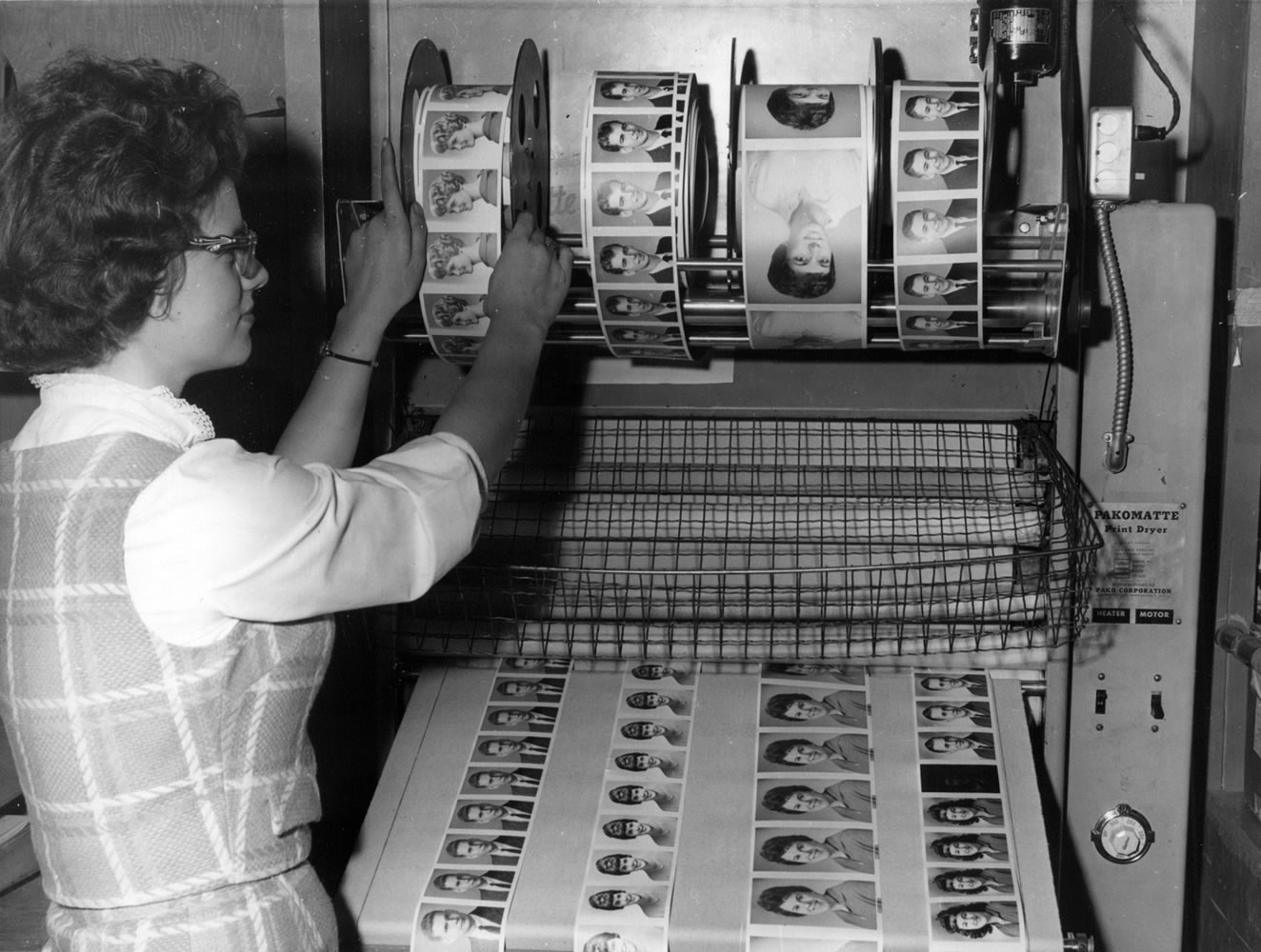Bruno Portrait Studios started in 1905 as a small Portland art studio and expanded that same year into Vancouver. The original owner’s son, Thaddeus Bruno, oversaw the company as it became a regional powerhouse, with as many as 17 locations popping up from Washington to California. In 1975, the businesses were individually sold.
Charles Winningham and Gene Lorenz ran the Vancouver studio after the Bruno family bowed out in the mid-20th century and made a point to invest in state-of-the-art technology, including buying the first commercially available digital camera model. Thanks in part to contracts with school districts to take student photos, the Vancouver Bruno’s went from $100,000 in sales in 1975 to about $750,000 by the end of the 1980s, Winningham said in 1989. He died in 1997. Lorenz, who students called “Mr. Bruno,” died July 10.
Generations passed in front of the company’s cameras. So did Aaron Peachey, a Hudson’s Bay High School graduate who fondly recalls being photographed by Lorenz in 1999 for senior portraits.
Aaron and wife Melodie thought they could reinvigorate Bruno’s, which from 2000 to 2012 was run by Bridget Crocker out of her Orchards home. The Peacheys bought the business and opened a storefront at 1333 Washington St., believing the company’s legacy would carry them forward.



